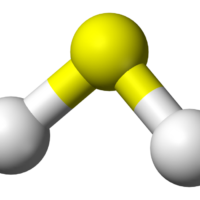The Top 5 Deadly Gases in The Oil and Gas Industry

Anyone who has worked in the oil and gas industry knows the dangers associated with the field. Unpredictable weather, complex industrial equipment, and harsh working conditions only add to the overall problems. What most oil and gas workers don’t realize is that certain types of fumes and gases can prove to be dangerous too.
It is important to be aware of the invisible hazards that are a cause of numerous injuries and illnesses among oil and gas industry workers.
1. Petroleum Gases
Petroleum vapors and gases contain harmful toxins, such as butane, benzene, and methane. Petroleum gases, in the oil and gas industry, are often known as hydrocarbon or ‘sweet’ gas. Employees working with oil storage tanks have the highest risk of exposure. 9 deaths have occurred because of petroleum gases since 2010 as per OSHA records. These fatalities took place while employees were thieving or gauging oil storage tanks. Sudden exposure to high levels of gases killed them instantly.
Benzene among other petroleum gases is carcinogenic in nature. It can cause health problems in both the short and long run. Employees exposed to high concentrations of the gas may experience acute toxicity to the liver, kidneys, and nervous system. In some cases, the toxicity can be severe enough to result in death.
The best way of controlling exposure to petroleum gases is by wearing a Self-Contained Breathing Apparatus (or SCBA). This is a common and recommended practice for employees working in the oil and gas industry. Unfortunately, there are certain employers that don’t provide their employees with SCBA.
2. Hydrogen Sulfide
Hydrogen sulfide or H2S is by far the deadliest hazard in the oil industry. This gas is formed during the decaying of organic matter. Hydrogen sulfide is generally found in drilling formations in oil fields. Accidents because of this gas is more common when the formations are being drilled for oil.
Contractors, service workers, and oilfield workers are all at similar risks of exposure to this gas. Hydrogen sulfide has an unmistakable rotten egg odor. This is also why the gas is known as ‘sour gas’. Unfortunately, the gas deadens the sense of smell and becomes odorless when present in high concentrations.
Employees cannot solely rely on their sense of smell for detecting the presence of this gas. Hydrogen sulfide is a toxic gas that can cause both long-term and short-term health effects. This is a list of symptoms associated with hydrogen sulfide exposure:
- Headache
- Fatigue
- Nausea
- Dizziness
- Loss of consciousness
- Irritation to the nose and eyes
Immediate death can be caused by a sudden high concentration of hydrogen sulfide. Such fatalities are categorized as death by poison by OSHA. Hydrogen sulfide is a flammable gas. It can explode under specific extreme conditions. It is important that employees don’t smoke or perform any hot work in areas where hydrogen sulfide may be present.
3. Diesel Exhaust
Diesel engines are used for powering most of the equipment in the oil and gas industry. Diesel exhaust is a unique mix of particulates and gases produced during the combustion of diesel fuel. Workers exposed to diesel exhaust may develop a wide range of health symptoms, such as:
- Nausea
- Respiratory disease
- Headaches
- Irritation to the nose and eyes
- Lung cancer
4. Mercury Vapor
Liquid mercury is dangerous if not handled correctly. Mercury vapor is a major concern in the oil and gas industry. Mercury is naturally found in oil and gas. It can accumulate on steel pipes and other drilling equipment during drilling operations.
Liquid mercury can condense within separators, heat exchangers, piping, and valves as the processing fluids cool down. Workers may become exposed to mercury vapor when the equipment is handled later for repair or maintenance. Workers that come in contact with mercury vapor may suffer health issues in the central nervous system over a period of time.
This includes nervousness, tremor, and personality changes. Other known health effects resulting from mercury exposure include loss of hearing or vision and damage to the kidneys. Women that get exposed to mercury vapors are at risk of passing on the poison to future children or unborn fetuses.
5. Flammable Gases
Almost all deadly gases discussed above are not just toxic but also flammable. There are many other flammable gases used in the industry. These are a few of the common ones:
- Compressed gases used in production and maintenance operations
- Different chemicals used for production, maintenance, and everyday use
- Natural gases found during the production and drilling stages of operation
- Gasoline and diesel fuel used by mobile equipment operators
Fires and explosions are common in the oil and gas industry. Fires can cause widespread damage to property and life. It can lead to severe and lasting repercussions. It’s crucial that all employees be trained in the proper protocols regarding flammable gases. Employees should also be given protective wear and equipment to reduce the risk of damage to life.
Reputable Oil and Gas Field Injury Attorneys in Louisiana are Ready to Fight for You
You may be eligible to claim compensation that goes beyond traditional workers’ compensation if you sustained injuries in an oilfield. The top-rated attorneys at Trainor Law Firm, LLC can help you obtain the maximum compensation you deserve. To set up your free and confidential consultation and case evaluation, call 985-900-2250 or contact us online.



